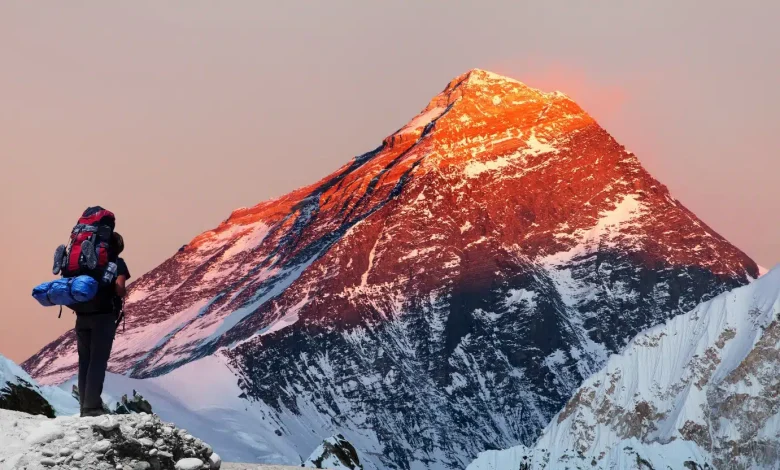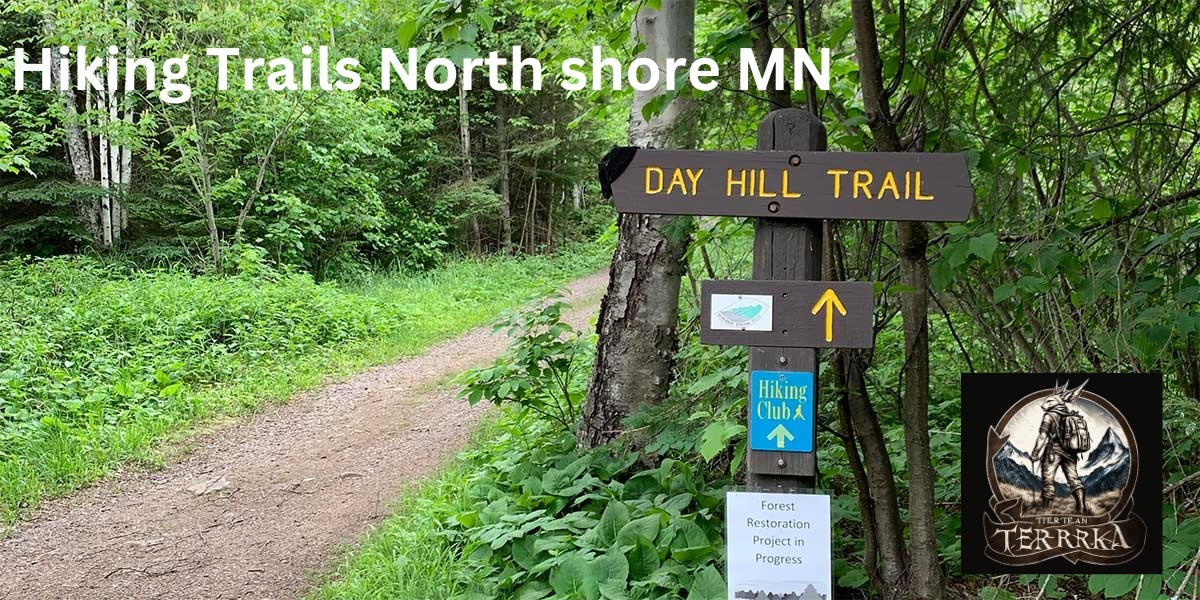What No One Tells You About Everest Base Camp Trek

The way you dream of the Everest Base Camp trek is in visions of towering peaks, colorful prayer flags snapping in the wind, and epic footsteps crunching across snow. What nobody during this experience tells you about how much of it takes place not only in your legs or lungs, but also in your mind, your gut, and your soul. The trek is so much more than a journey of the body. It’s an odyssey of unease, discovery and, occasionally, utter anarchy — and that’s exactly what renders it unforgettable.
Everest Base Camp Treks: No one warns you how mentally hard the trek is. People talk about the altitude, the cold, and the long days, but the hardest part isn’t always your sore muscles — it’s your internal struggle. When you’re five days in, and your temples are throbbing with altitude, and you haven’t taken a proper shower in a week, it’s your mindset that will help you scale your way to Base Camp. It’s getting out of bed every morning, putting on frozen socks, and still deciding to take another step because you have faith in what lies ahead.
And then there’s the altitude — how fickle and merciless it could be. You could be super-fit and still contract altitude sickness, while someone less acclimated breezes through unaffected.” It hits … differently for everyone, and it doesn’t announce how much you trained. In the Himalayas, you learn humility in a hurry.
No one warns you that the amenities will be so basic — or that so little will matter. The toilets are basic to barbaric. Bathing is infrequent and, when it occurs, nearly frostbitten. Your clothing will remain soiled for days, and you’ll find yourself layering at night as if you’re preparing for a blizzard, even in your lodge room. But surprisingly, you adapt. You quit giving a shit what you smell like or if your socks match. You care about being warm, about being healthy, about maybe getting an extra boiled egg at dinner.
The food is another surprise. It’s mostly vegetarian, mostly monotonous, and mostly dal bhat. But that simple meal — lentils and rice and vegetables — will get you through more than anything else. You might dream of pizza or coffee back home, but on the trail, dal bhat is your savior.
What doesn’t make the brochures, either, is the emotional heart of the journey. The quiet moments. Watching the sun come up over snow-dusted peaks, hiking in silence through pines while all you hear is your breath and the crunch of your boots. You’ll find yourself crying when you least expect it. You’ll find humor in things you would never find funny at home. You’ll form unlikely bonds with strangers who feel like family by the end.
Above all, no one prepares you for the fact that getting to Base Camp isn’t the best part. It’s awe-inspiring, yes—but the true marvel is getting there. In the struggle. In the stillness. When you get the moment that reveals what you can do more than ever you thought you could do.
That’s what the Everest Base Camp trek actually is—a test, a teacher, and an experience that stays with you long after the boots are off and your passport is stamped.
It’s More a Mental Challenge Than a Physical One
The Mount Everest base camp Trek is, for most people, assumed to be a purely physical endurance challenge — steep inclines, long days of walking, thin air. But the reality is, the mental aspect is often harder than the physical. You can train for months and be in the best shape of your life, but if your mind isn’t in the right place, the trek will chew you up and spit you out. It’s the awakening in the bitter cold, the tugging on wet socks, and the cajoling of oneself to follow through when every molecule in your being is saying stay under the covers. It’s coping with fatigue, headaches from altitude, fickle weather, and the total absence of comfort. There are no shortcuts. No Uber rides back to town. You just walk. And when the adventure becomes routine, it’s your mental toughness that carries your feet forward. “So you start wondering, ‘Why did I do this? Am I strong enough?” But every day, you are building grit. The mountain shows you patience, presence, and persistence. You learn what discomfort is and how to live with it. And when you do finally reach Everest Base Camp, it isn’t your body that brought you there — it was your mind. The triumph is mental. That’s what no one really tells you. The physical strength gets you through the door, but it’s your inner determination and mental toughness that drive you to the finish line. That little change in your way of thinking sticks with you after you’re off the mountain.
Prone to the Effects of Altitude (and Unpredictable)
The most surprising (and sometimes frustrating) aspect of trekking to Everest Base Camp is altitude. But here’s the thing: Altitude does not care if you are fit or prepared. It is unpredictable and profoundly humbling. You can be a skilled athlete and still end up feeling woozy, nauseated, or battling a splitting headache after a few days at high altitude. On the other hand, someone with only basic “training” might whiz through without incident. It’s not a question of strength — it’s whether your body tolerates lower oxygen levels.
The symptoms vary, too. Some become drained from the slightest tasks, others can’t get to sleep, and many lose their appetite. Headaches or shortness of breath , or even lightheadedness have just become part of the day. That’s why the acclimatization days are paramount. They allow your body time to adapt, but even that carries no guarantees. The best way to cope is to walk slowly (“bistari bistari,” as the locals say), drink more than you think you need, eat when you’re not hungry, and never, ever push it.
Altitude becomes as much a mental challenge as a physical one. It commands respect and will show you how to listen more closely to your own body. It’s humbling to know that you are not in control, and nature decides in the end. But once you learn to align yourself with it, you begin to experience the trek in an entirely different way — slow, steady, mindful. And in that rhythm, you find strength.
The Toilets… They are an Adventure in Themselves
Let’s be real — no one visits Everest Base Camp for the bathroom experience. But it’s one of those unmissable portions of the journey that you’ll surely discuss for years to come. From squat toilets in tea houses to “drop” toilets in tiny wooden outhouses, they run the spectrum from rustic to downright wild. Some are neat and sweet; others, well … let’s say they contribute to the adventure.
You learn quickly to pack your own toilet paper, hand sanitizer, and a good sense of humor. And if you’re hiking during the busier season, prepare for communal setups that may not have been mopped in a while. Some lodges do have Western-style toilets, although even then, plumbing is hit or miss. And at higher altitudes where everything freezes through the night, don’t be surprised if the seat is a block of ice in the morning.
Everest Base Camp. The toilet situation, despite awkwardness and occasional dread, becomes a bonding topic among trekkers. Everyone has a story, and laughter is guaranteed. It strips away airs and pulls people closer through mutual discomfort. You start to re-evaluate the beauty of a simple, modern bathroom.
By the end of the trek, you will likely be able to squat like a boss, balance in full trekking gear, and laugh at that which once terrified you. The toilets are part of the challenge, but also part of the charm.
Bathing Is a Luxury — Embrace the Grime
One thing you discover early on during the Everest base camp trek: hot showers are scarce, and they’re a luxury you may or may not be afforded. In the lower villages, you may get to have a proper shower (although you will generally have to pay extra for this). But the higher up you get, the fewer options you have, and finally, there are none. You’re probably more likely to be presented with a bucket of lukewarm water or a “solar shower” that may barely take off the edge of the chill.
Most of the hikers throw in the towel after a couple of days. You learn to pile on layers and avoid freezing instead of peeling off clothes and courting a chill. First class going from Singapore to the US, and you can imagine what that must’ve smelled like (wet wipes, dry shampoo, and deodorant become your best friend). Some days you might feel extra grimy and gross, but also, remarkably, you’ll care less and less, day by day.
It’s strangely freeing to let go of your typical standards of cleanliness. You start to see how much of your day-to-day life is habitual rather than essential. Out there on the trail, you care more about staying healthy and warm than squeaky clean. And honestly, everyone surrounding you feels the same — sweaty, dusty, and totally cool with it.
By the time you’re done, the first true shower you take back in civilization will feel delicious. But you’ll also have learned something significant: sometimes, it’s all right to be a little dirty rags if it means you’re living the hell out of life.
It’s Not Just Snow and Ice: The Landscape Will Surprise You
When people think of Everest, they think of endless snow, freezing cliffs, a white wasteland of features. But the real-life expedition to Everest Base Camp is much more colourful and unexpected. You’re led through diverse terrain, more breathtaking with each step, and that variety is part of what makes the trek so mesmerizing.
Himalayan Base Camp Trek You start in lush green valleys bursting with rhododendron forests, winding rivers, and waterfalls. There are colorful prayer flags strung between wooden bridges, the air is filled with birdsong. As you go up, the landscape changes. Pine woods yield to rocky trails and alpine meadows. Yaks browse beside the path, and small villages emerge like secreted treasures between the hills.
Eventually, you arrive at the stark, dramatic beauty of the high Himalayas — glacial rivers, towering snow-capped peaks, and the raw, wild terrain of the Khumbu Icefall. But even in those extremes, there are moments of softness: the golden light of sunrise, the warm glow of tea houses, the unexpected splash of flowers clinging to the rocky slopes.
There’s always something new to discover here. One minute you’re walking through a misty forest, the next you’re on a windy ridge and can see for miles. The landscape speaks a tale of contrast and transformation, and you are part of that tale with each step.
The dynamic landscape lets your spirit thrive and keeps your eyes open. It’s not only a stroll through ice and snow — it’s a passage through some of the world’s most dazzling natural diversity.
The Food Becomes Monotonous (Dal Bhat Power, 24 Hour!)
For food on the Everest Base Camp trek, variety is not the name of the game; consistency is. On the trail, you’ll hear the phrase over and over: “Dal Bhat Power, 24 Hour!” And though it is said with humor, there’s some truth in it. Dal Bhat — steamed rice served with lentil soup, vegetable curry, and sometimes a papadum — is the walk’s staple. It’s straightforward, wholesome, satisfying, and surprisingly invigorating.
The beauty of Dal Bhat is that it is infinitely refillable. If you’re hungry, you’re served additional rice and dal at no extra charge. That, if nothing else, makes it the hero meal of the trek. But after five or six days — however tasty it is — it becomes somewhat… tedious.
Everest Base camps Tea house menus vary: momos (dumplings), fried rice, noodles, and basic pasta dishes. But the higher up you go, the less complicated (and more expensive) the choices get. All supplies must be brought in on foot or by yak, so don’t expect gourmet cuisine.
And yet, there is something comforting in the routine. You learn to appreciate the warmth of a bowl of garlic soup after a cold day’s hike. You commiserate with other trekkers about your shared desire for chocolate, fresh fruit, or even toast with real butter.
The food may not be varied, but it fuels your body, and it becomes part of the rhythm of the trail. And by the time you return, you may even find yourself missing dal bhat — just a bit.
Wi-Fi Exists… But Don’t Count on It
Yes, there is Wi-Fi on the Everest Base Camp trek—or at least, there is when you start it. But, oh, don’t hold your breath. In the lower villages, Namche Bazaar, or Lukla, you’ll find decent connections, although it’s usually at your extra high cost. The higher you go, the weaker, slower, and more expensive the signal gets. Even at $5 to $10 a connection, you wouldn’t even send one single message or upload one grainy picture. In villages like Dingboche or Gorak Shep, it’s either non-existent or a joke worth downloading. Waiting for five minutes to load the weather is a common way to get acquainted with the local cell phone company, Flow.
You hated every second of it at first. You don’t realize how much you rely on social media until you use it. The next thing you know, the first five miles of your day have passed. You engage with other climbers more, take notes, or gaze into the distance. Your smartphone is a camera and nothing more. No, you don’t get any likes, no testing, you don’t know the current news blasts back home. Oh, we have no idea how deaf you are to yourself… is how it works when you’re online 24 hours a day. So, sure, there is Wi-Fi on the way. But good too, a much stronger connection you will be forming with nature, people, and yourself.
Your Tempo Is Everything — Careless Caution Can Be Deadly
The biggest thing that you need to know about trekking to Everest Base Camp is that the pace is everything. It’s not a race. In fact, hurrying can be one of the most dangerous things you can do on the trail. As you ascend higher and higher, the air becomes thinner, and your body needs to adapt. Altitude sickness is not something you can “work through.” When you go too fast, all your risks increase radically.
Everest Base Camp trek cost Local guides are always telling trekkers, “bistari bistari,” which translates roughly to “slowly, slowly” in Nepali. It’s not just advice — it’s a survival strategy. You may feel strong and energized at the beginning of the day, but that energy can disappear in minutes as you ascend higher. The slow pace gives your body time to adjust to the lower levels of oxygen and you space to take in the stunning scenery.
Walking slower is less likely to injure you. Everywhere are uneven paths, loose rocks, and narrow ledges. Trekking is not only about being physically fit — it’s about being mindful and aware of your body and surroundings and finding your balance.
There’s the reassurance of going at your own steady pace on the other end. Each step is intentional, and the destination of each day is a well-earned reward. So leave the ego behind. Slow down. Breathe deeply. Listen to your body. Because in the end, the road to Base Camp isn’t the destination, but how you get there.
At Altitude, Emotional Highs and Lows Hit Harder
No one really n ofekbreit about the Everest Base Camp trek is how intense the emotional rollercoaster can be. Altitude has a way of exaggerating everything. One minute, you’re sitting on a ridge, gazing at snow-dusted peaks and feeling incredibly small and grateful. The one after, you’re drained, chilled, and questioning what on earth you were thinking when you signed up for this in the first place.
The physical exhaustion, the need to take turns to sleep due to the thin air, these affect your mental state in ways you wouldn’t anticipate. Small problems feel bigger. Your patience runs thin. Things that wouldn’t even register with you at sea level — forgetting a glove or misplacing your water bottle, for instance — can loom as crises. You may even find yourself weeping for no reason at all. And that’s okay. It’s normal.
But here’s the downside: the highs are also higher. The triumph of mastering a challenging trail. Warming up in a tea house after a cold morning. The mountains can be really beautiful when the sun shines just so. And then, standing at Everest Base Camp after days of toil and tears, the exhilaration is indescribable.
These emotional spikes and valleys are part of what makes the trek so transformative. You don’t just hike through a mountain range — you hike through yourself, too. And with each emotional rise and fall, you come to know yourself a bit better.
Tea Houses Can Be Frigid at Night — Have the Right Gear
Trek To Base Camp Mount Everest Tea houses along the Everest Base Camp trail are charming, cozy, and a welcome sight after a long day’s trek—but after dark, they get cold. Really cold. These lodges are basic. Most of the rooms have no insulation or heating. Some eating areas have a tiny stove that burns yak dung or wood, but it starts up only in the evening and does not warm the sleeping quarters.
Temperatures at higher altitudes routinely plunge below freezing, including in the teahouse rooms. You will see your breath like clouds in the air. Anyone who has ever accidentally left their water bottle sitting out overnight knows it can freeze solid. This is where all the difference in your gear comes. A good sleeping bag (ideally rated to at least -10C/14F), thermal layers, a warm hat, gloves, and woolly socks are essential.
After all, it is common to sleep in a full set of trekking clothes. Some trekkers even bring a lightweight sleeping bag liner or a hot water bottle (some lodges will fill it for a fee) to make the frigid nights more tolerable.
The chill doesn’t stop tea houses from being a connective place. You huddle with other hikers over steaming cups of tea, swap stories , and laugh at how bundled up you all are. The cold is an aspect of the experience and part of your badge of honor once you finish the trek.
You Will Make Surprising Friends on the Trail
Friendship Everest Base Camp trekIt is one of the most beautiful, unexpected gifts of the Everest Base Camp trek. You start as a stranger, just another hiker in boots and a backpack — but by the end, you’ve forged ties that feel like family. It happens naturally. You eat trails and meals, drink tea, and struggle. You cheer for one another’s little triumphs — like reaching a new altitude without experiencing symptoms, or surviving a particularly punishing hill.
On challenging days, it’s words of affirmation from a fellow hiker that help you power through. On the best days, it’s the laughter and the stories exchanged that make it all so much richer. You read about lives that are so different from your own, but also realize how fundamentally alike you all are at your core. Union, cohesion, Assembled Nations (those from diverse lands in extraterrestrial spheres, consuming a liturgy of cosmopolitanization, where the languages spoken are those one would not even hear when out of place back home)
There’s a unique kind of intimacy that happens when you are all reduced to the basics — no makeup, no day jobs, no Instagram filters. Just humans, breathing thin air, headed toward a dream. The people you meet frequently turn into lifelong friends, or if not, at least memorable characters in your story.
Not merely in proximity, but also in purpose and in challenge, are these friendships forged. And when you do arrive at Base Camp, it’s not only your triumphant moment — it’s your group’s moment. And that shared victory? It’s magic.
The View Isn’t the Only Real Reward — It’s Who You Become
When you hear people talk about the Everest Base Camp trek, they often assume that the goal is the reward, in the form of your first sight of the towering peaks or even just the photo at Base Camp, or ticking a box on their bucket list. And sure, those things are powerful — but not the real reward. The real gift of this journey, however, is the transformation that takes place within.
Everest Base Camp Trek: The trail challenges you in ways you cannot foresee. It removes comfort, convenience, and ego. You contend with cold, tiredness, self-doubt, and those long, dark nights when you question whether you have what it takes. But bit by bit, you keep on moving forward. You adapt. You grow. You figure out that you’re stronger than you knew.
At some point along the way, you stop pursuing the summit and begin to enjoy the process instead. You learn to slow down. To be present. To savor every single step, every single view, every single breath.” The person who began the trek—jittery, unsure, maybe even scared—is not the same person who arrives at Base Camp.
By the time you find yourself standing under the tallest mountain on Earth, the view is a mirror of the inner peak you’ve reached. You didn’t merely walk to a destination — you walked in as someone else.” Someone more grounded. More resilient. More alive.
That’s the real reward. Not the mountain before you, but the one to which you ascended within yourself.



